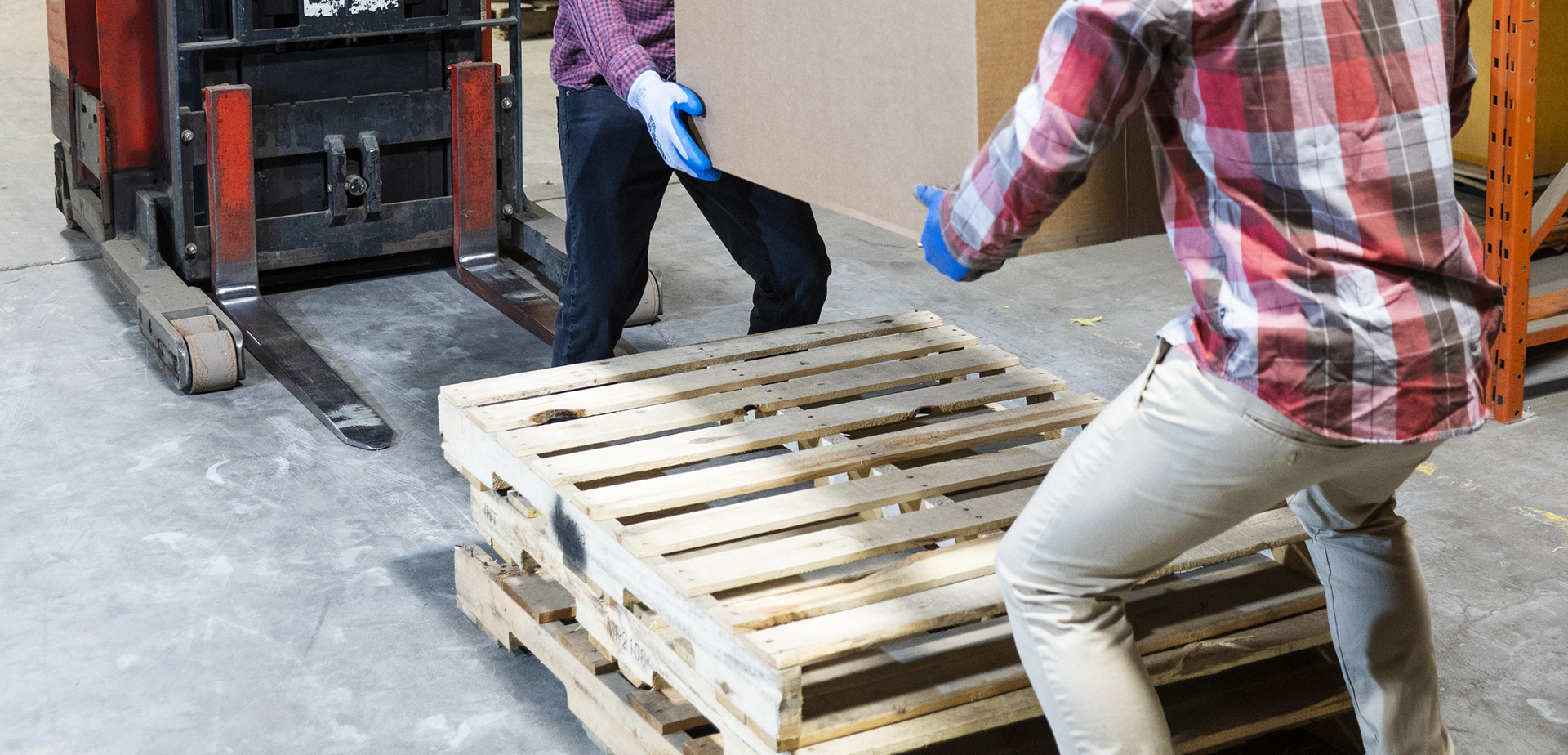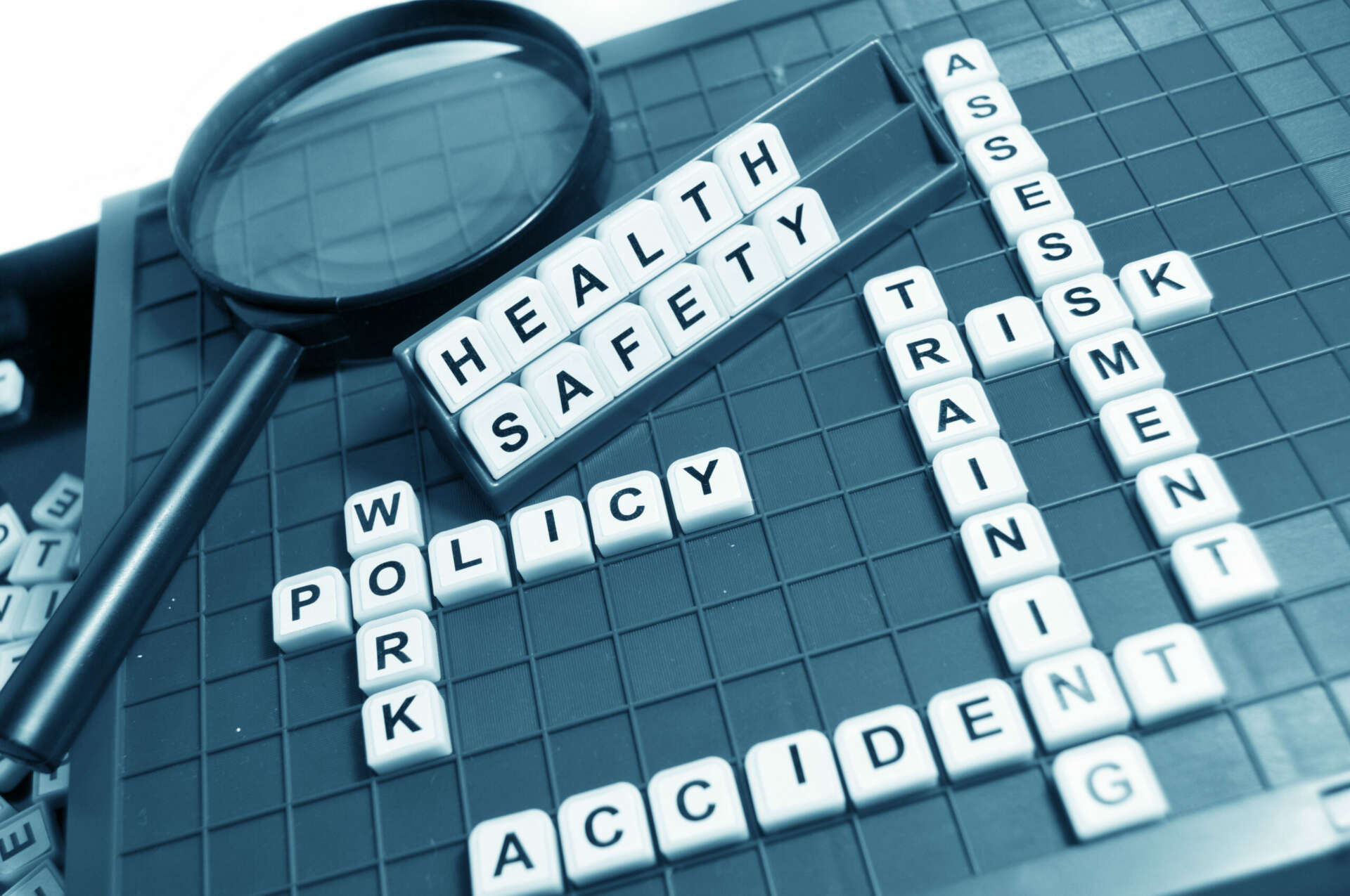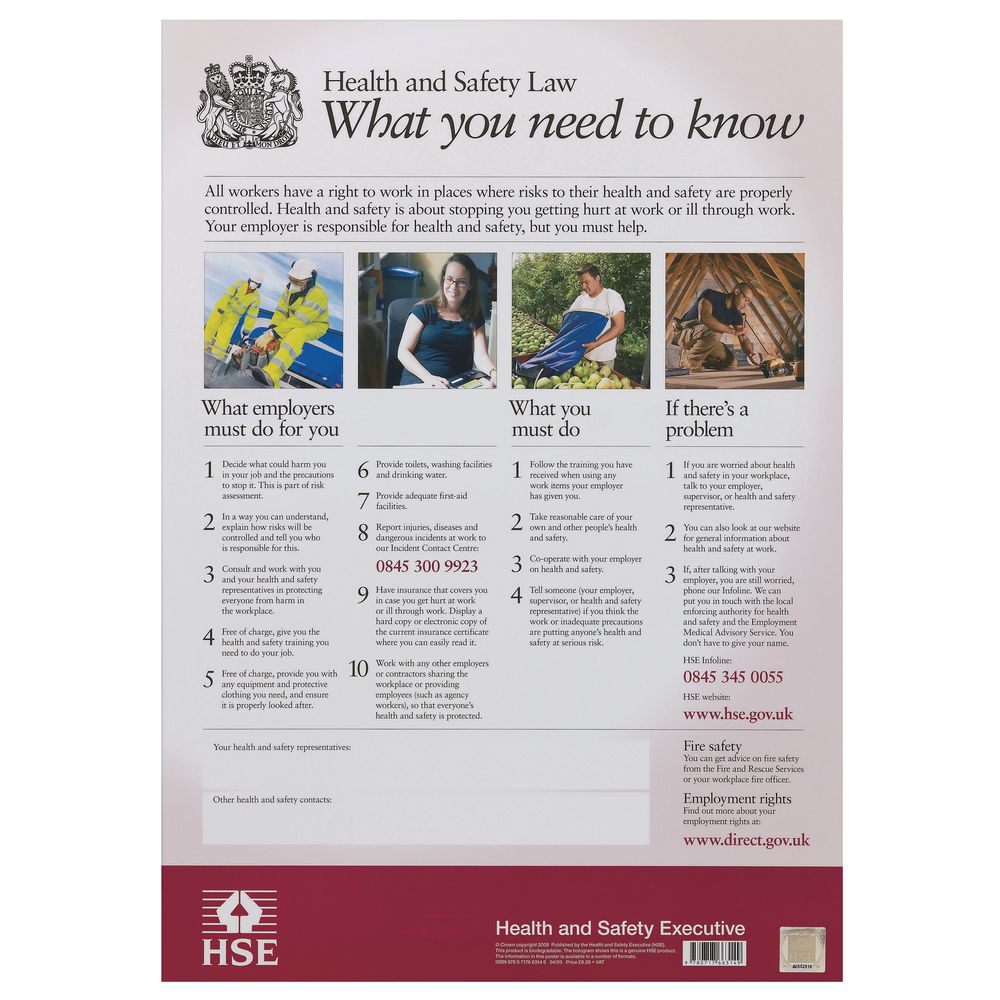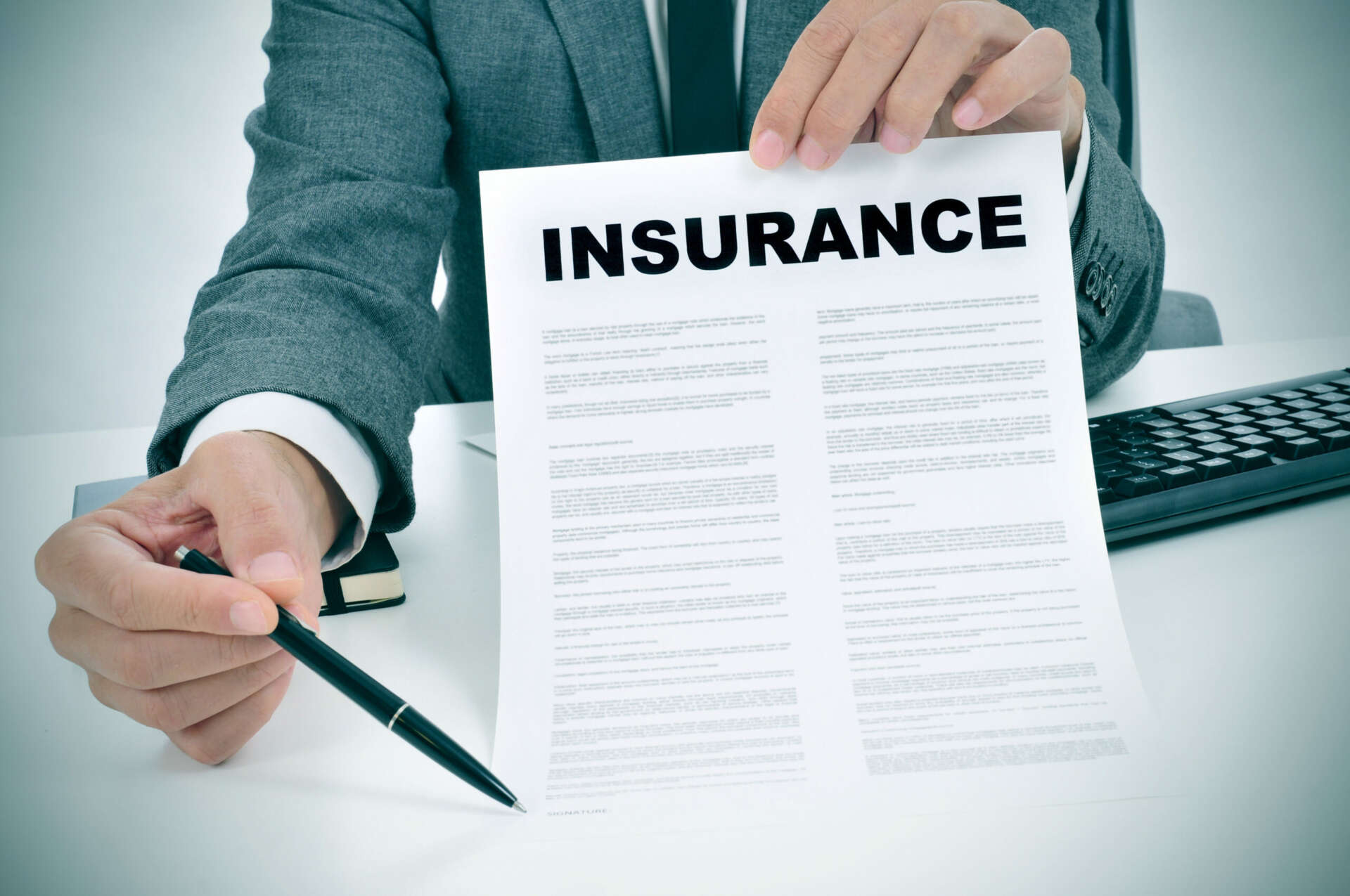What do Retailers Need to Know to Protect Their Employees?
Retail contributes £194 billion to the economy and is the UK’s largest private-sector employer, with 4.9 million employees. It comprises of a range of businesses all with varied risks and health and safety requirements.
Work-related illness and injury have caused a loss of 31.2 million working days, leading to low morale, productivity loss and penalties for non-compliance. How much do you know about retail health and safety?

What are the Main Health and Safety Risks?
Slips and Trips
Slips and trips are the most common cause of workplace injury, with 90% of slipping resulting in broken bones. Employers have a responsibility to take reasonable precautions to protect anyone affected by their work including the public.
Wet Floors and Spillages
Wet or dirty floors can cause accidents, implement an effective cleaning regime with well-trained cleaners to reduce risk, a lack of understanding leads to inappropriate shortcuts. A cleaning regime means it will happen at the right time using the right products.
- Spillages should be cleaned immediately, and the floor left dry.
- Wet floor signs should always be used.
- Use the right amount of the right cleaning product.
- Cleaning equipment must be maintained.
- A dry mop or squeegee will reduce floor-drying time. A well-wrung mop will still create a slip risk.
- Spot clean where possible.
- Create a cleaning activity log.
Floor in Poor Condition
Damaged floors are a trip hazard, all floor surfaces especially steps, slopes and ramps should be maintained to a good condition.
Trip Hazards
The shop and stock room must be tidy, aisles, walkways and access routes should be clear and waste materials disposed of appropriately, as well as avoid trailing cables where possible.
Get the Right Footwear
Where floors cannot be kept clean and dry, use slip-resistant footwear. Trial the footwear first to make sure it’s suitable and comfortable.
People and Organisation
Consider how work is organised to avoid rushing or overcrowding, like using barriers to stop pedestrian access to wet floors. Signs don’t stop people, if they can’t see a spill, they will ignore it.
What Employees Can Do to Prevent Slips and Trips?
- Report any accident or near miss to your employer, this information can prevent further accidents.
- If you see a spillage, clean it up or arrange for it to be cleaned.
- Report any damaged floors and keep people away from the area.
- Keep the workplace tidy.
- If there’s a trip hazard, remove it or arrange for it to be removed.
- Personal Protective Equipment (PPE) should be worn and looked after. Report damage to your employer and organise a replacement.
- Tell your employer about any dangerous situation or if a health and safety strategy has gone wrong.

Manual Lifting and Handling
Every year one million working days are lost to manual handling injuries, the main causes being:
- Lifting heavy loads.
- Excessive force.
- Repeated handling of heavy loads.
- Poor posture and twisting when handling.
- Handling in poor working environments.
Manual handling should be avoided if reasonably practicable, if it can’t be employees must be trained in proper lifting techniques, handling aids and the risk of poor technique. Employers should tell workers if they’re making manual handling mistakes and have a legal duty to manage the risks of musculoskeletal disorders (MSDs).
Manual Handling, Moving Stock and Roll Cages
Roll cages can cause injury if on steep inclines, are overbalanced, repetitively loaded and unloaded or trap limbs. They should be robust to withstand long-term use and suitable for high and low temperatures, maintenance is vital to preventing accidents.
The Health and Safety Executive (HSE) Recommends:
- Only move one cage at a time.
- Move cages no faster than walking speed.
- Wherever possible push instead of pull.
- Seek help on ramps and uneven surfaces.
- Stack heavier items at the bottom.
- Do not load above the load line or where the operator can see.
There should be procedures for stock delivery and collections. Staff must be trained for safe manual handling, storing items at the appropriate height in the stock room and on display.
Managing Risk on Checkouts
Checkouts should be designed to help workers carry out their tasks, with easy access to equipment and controls, to avoid awkward, static or cramped posture. Equipment should be well maintained, and employees trained for their day to day activities.
Lifting Goods
Sensible health and safety measures should be implemented when lifting cannot be avoided. Employers must consider individual capability, awkward posture, minimising carrying distance, avoiding lifting from floor level and whether more than one worker is required.

Sitting and Standing
If an employee can sit while doing their job, they are free to do so. Seats should always be suitable for the job and regular breaks must be scheduled.

Machinery, Vehicles and Transport
Few retail employees are regularly exposed to heavy machinery. Those who are, in warehouses mainly, run the risk of one mistake is fatal. Machinery must be well kept, and machine operators trained and tested as required.
Risk assessments should include any identified hazards of machinery or vehicle use and precautions taken:
- On a shared route, there must be separation between vehicles and pedestrians.
- All route must have a surface suitable for its purpose.
- Introduce a speed limit around the premises.
- Avoid reversing where possible or have an effective system in place.
- All drivers and operators must understand safe working practices.
- Employers must give employees adequate training when joining the company or for new or increased risks.
- Employees and contractors should be assessed for their physical and mental fitness to drive. They should have up to date, appropriate certificates and qualifications.
- Employers must make sure that vehicles can do the job.
- Vehicles must be maintained in efficient working order.
- Forklift truck drivers must meet the requirements of the Lifting Operations and Lifting Equipment Regulations 1998.
- Employers have responsibilities to visiting drivers, where they must be fully coordinated with the health and safety requirements on-site.

Working at Height
Retail employers must ensure employees working at height are trained in safe-ladder use. Any employer or anyone controlling work at height must comply with Work at Height Regulations 2005.
Working at height should always be pre-planned, supervised and carried out by competent people with the right equipment. Before using a ladder in any location, there must be a pre-use check of the entire ladder, the area and weather conditions to ensure there is nothing to cause an accident. If there’s likely to be falling materials or objects, it should be an exclusion zone to keep people away.
An emergency plan must be in place which all employees know. Level of competency required will differ based on the task, from simple instructions to compulsory certification by a trade association.

Working Alone
Retailers are particularly vulnerable to theft when only one person is on shift. Lone workers can be threatened and intimidated causing long term psychological, emotional and physical effects. Employers must protect lone workers and minimise risks, BS 8484 compliant lone worker devices and applications allow for immediate emergency response. A safe area should be provided, and lone workers must be checked on regularly, consider monitoring via a certified Alarm Receiving Centre.

Fire
The Regulatory Reform Fire Safety Order 2005 (FSO) applies to retail businesses and requires a fire risk assessments, mitigation of risks and regular reviews of procedures to protect staff and customers.
Fire Safety Considerations:
- Designation and accessibility of fire exits and escape routes.
- Appropriate fire alarms and regular testing.
- Employee training.
- Evacuation procedures and fire drills.
- Storage of combustible waste and flammable stock.

Workplace Violence, Bullying and Crime
Employers have a legal duty to protect employees against all work-related violence and it should be included in the risk assessment. Employees should not accept violence, threats or bullying as ‘part of the job’, a clear policy should exist for dealing with violence and bullying which must be followed.
Crime has cost retailers £700 million, staff should be trained on safe cash handling procedures, confrontational customers and what to do in a burglary.

Too Hot or Too Cold
There is a legal minimum temperature in shops is 16°C and 13 °C for heavy physical work, there is no legal maximum. The temperature should be checked and recorded regularly. Workers in the chilled area must wear PPE and have regular breaks, any concerns should be raised.

Cuts, Burns and Scalds
Faulty equipment, hot fat or water and the pressure to get food to customers are common causes of accidents. Staff should be trained for their job and handle appliances with care. Kitchen areas must have first-aid arrangements and an accident book, which employees must know.

Personal Protective Equipment (PPE)
Retail employees may have to wear PPE, for instance, checkout staff might require fleece jackets in winter. Other PPE could include gloves, heavy-duty footwear, high visibility jackets and safety glasses. PPE must be free of charge, maintained and cleaned regularly at the employer’s expense.

Tackling the Risks
Decide Who Will Help
Managing health and safety is an employer’s legal duty, they are responsible for identifying someone competent to carry out duties effectively. This could be themselves, employees or someone outside the business. Employees know the workplace better than anyone but if it’s a large or high-risk business, a health and safety specialist may the right choice.

Health and Safety Policy
All businesses must have a health and safety policy explaining how health and safety will be managed. If there are five or more employees, the policy must be written down but it’s useful in any case. The policy and any changes must be shared with all employees.

Manage Risks and Consult Employees
Employers are lawfully obligated to conduct a risk assessment and consult their employees on all workplace health and safety, protecting health, safety and welfare.

Training and Information
Education is a powerful tool to ensure the safety of workers, customers and visitors. Everyone including contractors and self-employed individuals need to know how to work safely on the premises. Workers must have access to training which should be relevant to the work environment and based on the risk assessment.

The Right Workplace Facilities
Employers must provide safe and clean facilities for employees including lighting, heating and ventilation. Staff are also entitled to toilets, washing facilities, refreshments, and clear access routes. This includes staff with disabilities.

Display the Health and Safety Law Poster
Any business that employs people must display the health and safety law poster, explaining British health and safety laws and responsibilities, where it can be easily read or provide employees with an equivalent health and safety law leaflet. The employer can add other details like health and safety contacts.

Get Insurance for Your Business
Businesses with employees should strongly consider employers’ liability insurance. If an employee is injured or becomes ill as a result of work, they can claim compensation.
Find out more about employers’ liability insurance on the GOV.UK website.
An accurate and up to date record should be kept on all health and safety matters, it will help to maintain compliance.

Who is Responsible for Policing Health and Safety in Retail?
The Local Authority’s health and safety inspectors are responsible for making sure employers comply with health and safety laws. Retail is categorised as ‘low risk’ for health and safety enforcement meaning premises are not subject to unannounced inspections. They will only be visited by an enforcement officer is something has gone wrong like a complaint issued or an accident.

What’s the Legislation?
Be aware, this list is not exhaustive.
- Health and Safety at Work Act 1974 – Organisations have a legal responsibility to protect the health, safety and welfare of its employees.
- Management of Health and Safety at Work Regulations 1999 – Employers must conduct a risk assessment, appoint a competent person and provide health and safety information on employees.
- The Reporting of Injuries, Diseases and Dangerous Occurrences Regulations 2013 – Employers must report any accident resulting in death, major injury or over seven-day incapacitation to the enforcing authority.
- Safety Representatives and Safety Committees Regulations 1977 – Employers are legally required to consult any nominated representatives, who represent staff on all matters of health and safety.
- Health and Safety (Consultation with Employees) Regulations 1996 – Employers must inform and consult with employees on all health and safety matters.
- The Workplace (Health, Safety and Welfare) Regulations 1992 – These regulations require employers to provide adequate employee facilities and workspace.
- The Health and Safety (Display Screen Equipment) Regulations 1992 – This applies to Display Screen Equipment (DSE) users who habitually use a screen as part of their normal work.
- The Personal Protective Equipment at Work Regulations 1992 – Employers must provide PPE free of charge and suitable for the risk.
- Manual Handling Operations Regulations 1992 – Manual handling must be avoided as far as is reasonably practicable.
- The Provision and Use of Work Equipment Regulations 1998 – Work equipment must be safe and suitable for its purpose and properly maintained irrespective of its age.
- The Working Time Regulations 1998 – This covers limits on length of the working week, right to annual leave, rest breaks and the employment of young people under 18.
- Work at Height Regulations 2005 – The purpose is to prevent death and injury caused by a fall from height.
- The Regulatory Reform Fire Safety Order 2005 (FSO) – It details general fire safety in England and Wales for non-domestic properties.
Visit the HSE’s retail page for more information on all topics discussed.
Have a look at APG’s divisions page to discover how we help ensure the safety of retail properties.
About APG
The Asset Protection Group comprises a group of Fire & Security companies with shared ownership and one common goal, protecting your most important assets. As a collective group, we look to offer protection to your assets to assist you with your ongoing success within your own business.

